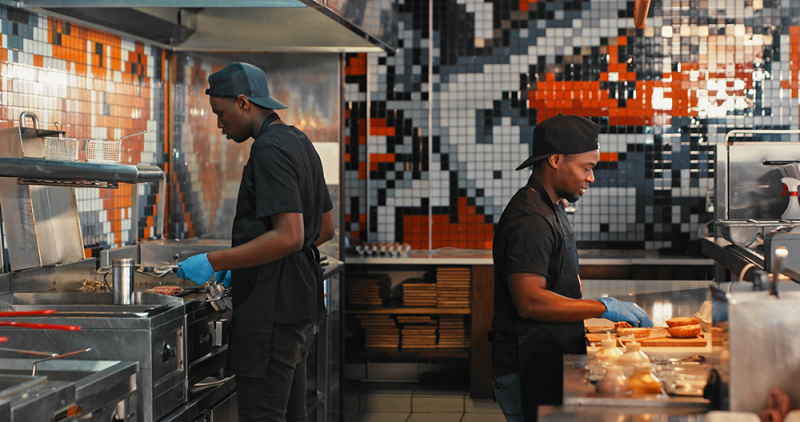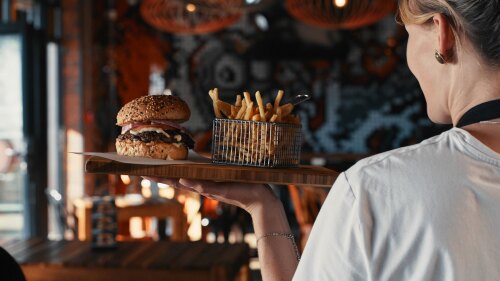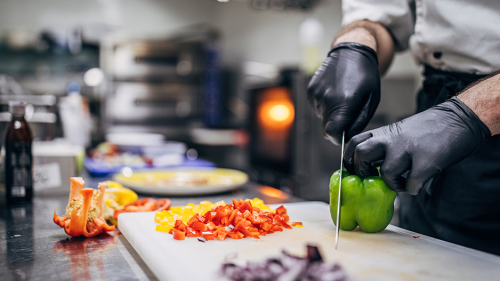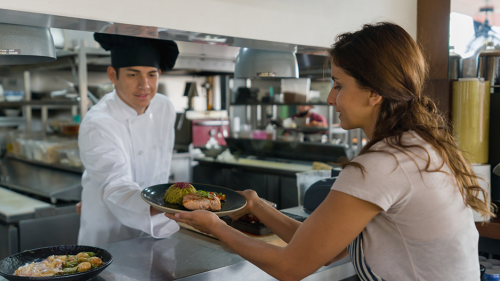Oftentimes, burns are caused by poorly trained staff, overcrowded kitchens and workspaces, and hot oil, grease, or steam. Prevent burns by using equipment with built-in safety features, providing employees with proper first aid training, and making sure employees understand the safety procedures and policies
Identifying burns and shock
Thermal burns occur with contact to a hot surface, hot liquids, fire, or an explosion. The severity of the burn is categorized into three different levels: first degree, second degree, and third degree.
- First-degree burn: A burn on only the outside layer of skin.
- Second-degree burn: A burn injures the layer of skin beneath the surface. Usually blisters form.
- Third-degree burn: This burn destroys all layers of skin
- Shock: A person in shock will be cold, pale, and sweaty, and may pass out. Do not administer fluids or drugs to someone in shock.
First aid training
Provide employees with first aid training and schedule these workers on each shift. Do not apply ointments, sprays, antiseptics, home remedies, butter, or grease to burns. Minor burns can usually be treated by running under cool (not cold) water or covering with a cool, wet cloth until the pain eases. Major burns require medical attention. Provide appropriate first aid, call 911, or follow the restaurant’s procedures for proper care.
Have first aid kits readily available and properly stocked at all times. Kits should include gloves and other personal protective equipment (PPE) for treating wounds and burns.
Equipment
Use grills and hot surfaces with a built-in guard bar to help prevent accidental burns. Purchase fryers that have automatic features like dumping used grease and lowering food into hot oil, and always use splash guards on fryers.
Additional safety tips
- Always use potholders, gloves, or mitts when cooking and reaching into ovens, stoves, or broilers
- Do not overcrowd cooking surfaces
- Ensure pot and pan handles do not extend over the edge of the cooking surface to avoid bumps, spills, and burns
- When cooking with gas stoves or grills, flames should cover only the bottom of the pan
- Avoid overfilling pots so they don’t boil over
- When removing a cover from a pot or pan, lift it from the back to direct the steam away from you
- Use tongs to place food in boiling water
- Never leave hot oil and grease unattended
- Remove ice crystals before placing food into fryer baskets to prevent splatter and steam
- Do not fill fryer baskets more than half full
The information and recommendations contained in this material have been obtained from sources believed to be reliable. However, SECURA accepts no legal responsibility for the accuracy, sufficiency, or completeness of such information. Additional safety and health procedures may be required under particular circumstances. Please your SECURA Risk Management Consultant for more information.






